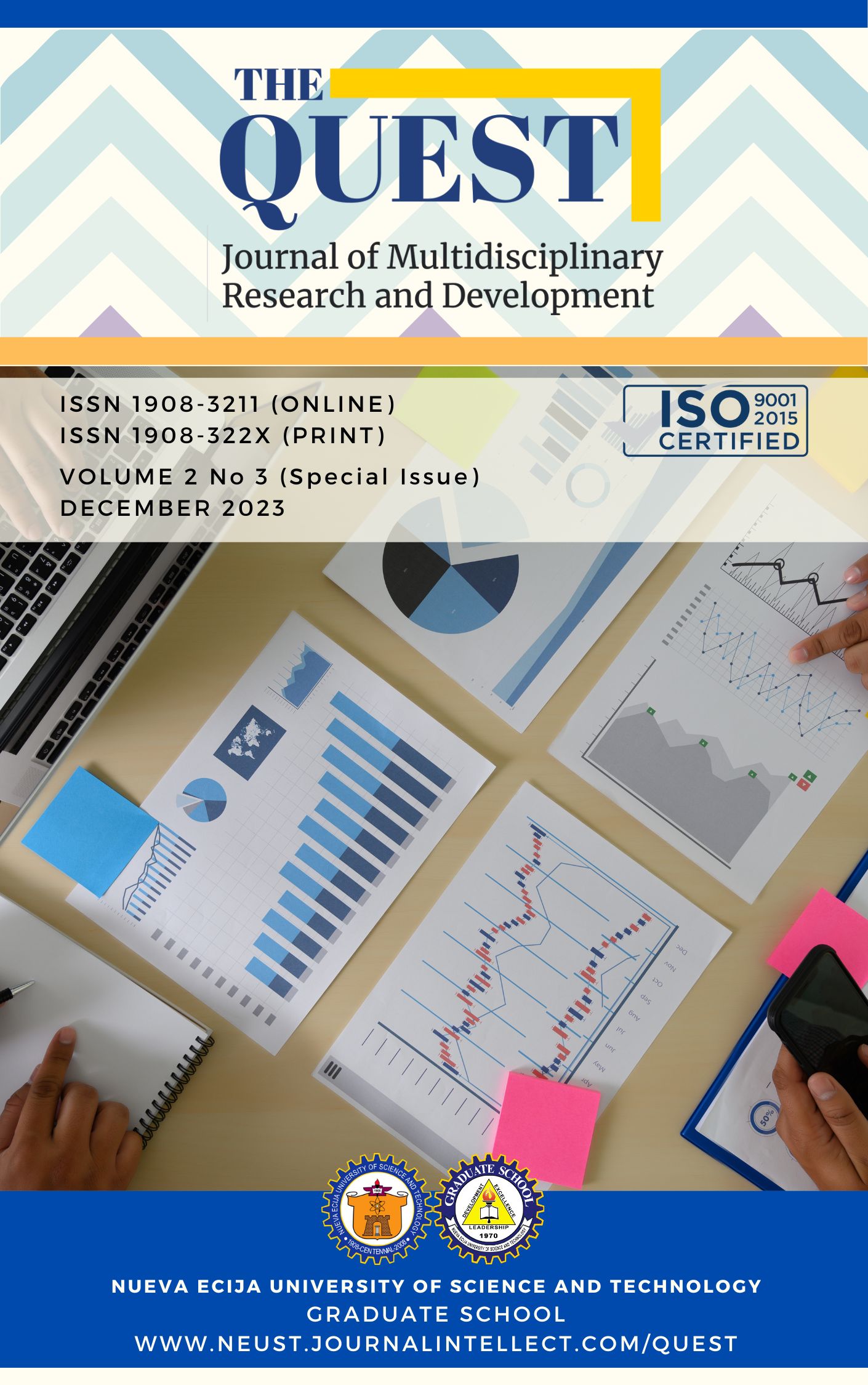Employee Wages of Property Service Companies in China: Basis for an Improved Salary Structure

Published 12/30/2023
Keywords
- Compensation; Employee wages; KPI; Performance; Salary structure
How to Cite
Copyright (c) 2023 The QUEST: Journal of Multidisciplinary Research and Development

This work is licensed under a Creative Commons Attribution-NonCommercial 4.0 International License.
Abstract
Employees are considered as assets of an organization. Compensation and other benefits of employees can improve their performance efficiently and effectively. Formulation, Implementation and Evaluation of employee wages may encourage and retain human resources as important talent of an organization. Therefore this study was conducted for further analysis of the property service companies in China to propose an improved salary structure for service property companies. This paper aimed to propose an improved salary structure of property service companies. Through the questionnaire survey, it is found that property service company has salary structure in terms of system, policies, performance evaluation and promotion but despite of many branches and numerous employees to perform different work assignment there are still certain problems occurring in the companies that focuses also on system, polices, performance and promotion. Findings revealed that improvement on salary structure and other benefits may be considered in order to attract and retain employees. From the survey, observation and interviewed to employees a proposed improve salary structure may be considered in order to achieved the expected performance of employees.
References
- Chew, W. B. (2014, August 1). No-Nonsense guide to measuring Productivity. Harvard Business Review. https://hbr.org/1988/01/no-nonsense-guide-to-measuring-productivity%20labor+cost&oq=labor++cost&aqs=chrome.0.69i59l2j0i512l4j69i60l2.2580j0j4&sourceid=ch%20rome&ie=UTF-8
- Courage, T. (2022). Management Efficiency and Cost Reduction in Property Service Companies: A Case Study Approach. International Journal of Business Management, 38(2), 115-130.
- Multiplier. (2023). Compliance and Benefits: Navigating China's Labor Laws for Employee Welfare. HR Trends Quarterly, 15(2), 78-92.
- Team. (2023). Employee Benefits in China: Understanding Social Welfare and Compensation Systems. Business Insights Today, 10(1), 45-58.
- Xiao, J. (2019). Labor Productivity and Efficiency in the Chinese Property Service Industry: A Comprehensive Analysis. Journal of Economic Studies, 45(3), 210-225.
- Zheng, X., Ye, H., (2014). The Top Design of Capital and Business Model, 10, ISBN 978-7-121-23912-0
